The Benefits of Regenerative Agriculture: From Soil Health to Climate Change
REGENERATIVE AGRICULTURE

Regenerative agriculture has gained increasing attention in recent years as a sustainable and environmentally-friendly approach to farming. But what exactly is regenerative agriculture, and what makes it different from conventional farming methods? In this blog post, we will delve into the world of regenerative agriculture and explore its benefits, from improving soil health to mitigating the impacts of climate change. By the end, you’ll have a better understanding of why regenerative agriculture is gaining momentum as a viable solution for the future of farming.
Understanding the Basics of Regenerative Agriculture
Regenerative agriculture is a holistic approach to farming that focuses on restoring and improving the health of the land and ecosystems. Unlike conventional farming methods that often rely on synthetic fertilizers and pesticides, regenerative agriculture emphasizes practices that work with nature to promote soil health, enhance biodiversity, and improve overall ecosystem resilience.
At the core of regenerative agriculture is the belief that healthy soil is the foundation for a thriving farm. By using techniques like cover cropping, crop rotation, and minimal soil disturbance, regenerative farmers aim to build up organic matter in the soil and promote beneficial soil microorganisms. This not only improves soil structure and fertility but also enhances its ability to retain water, reducing the need for irrigation and increasing resilience to droughts.
Another important aspect of regenerative agriculture is biodiversity enhancement. By creating diverse habitats, such as hedgerows and riparian buffers, farmers encourage the presence of beneficial insects, birds, and other wildlife that can contribute to pest control and pollination. Additionally, integrating livestock into the farming system, such as rotational grazing, can help mimic the natural movement of herbivores, improving soil fertility and nutrient cycling.
In addition to its focus on soil health and biodiversity, regenerative agriculture also plays a crucial role in mitigating the impacts of climate change. By sequestering carbon dioxide from the atmosphere through practices like cover cropping and conservation tillage, regenerative farmers can help offset greenhouse gas emissions and reduce the overall carbon footprint of agriculture.
In summary, regenerative agriculture is a comprehensive approach to farming that goes beyond traditional practices. By prioritizing soil health, biodiversity enhancement, and climate change mitigation, regenerative farmers are working towards a more sustainable and resilient agricultural system. This approach offers numerous benefits not only to farmers and their communities but also to the environment as a whole.
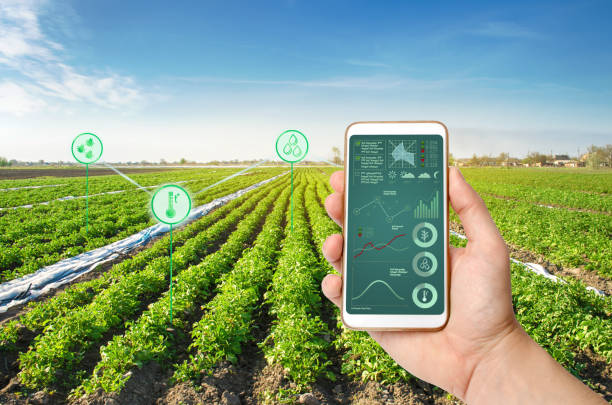
Soil Health and Biodiversity Enhancement through Regenerative Farming
Regenerative agriculture is not just about improving soil health, but also about enhancing biodiversity and creating a more balanced ecosystem. By prioritizing these aspects, regenerative farmers are able to create a farm that not only thrives, but also supports a wide range of beneficial organisms.
Soil health is at the heart of regenerative husbandry. By utilizing practices such as cover cropping, crop rotation, and minimal soil disturbance, regenerative farmers are able to improve soil structure and fertility. This leads to healthier herbs and higher crop yields. Additionally, by increasing organic matter in the soil, regenerative agriculture improves water retention, reducing the need for irrigation and making farms more resilient to droughts.
But regenerative agriculture doesn’t stop at soil health. It also aims to enhance biodiversity on the farm. By creating diverse habitats, such as hedgerows and riparian buffers, regenerative farmers provide a home for beneficial insects, birds, and other wildlife. These organisms play a crucial role in pest control and pollination, reducing the need for synthetic pesticides and promoting a more balanced ecosystem.
Integrating livestock into the farming system is another important aspect of regenerative agriculture. Through practices such as rotational grazing, regenerative farmers mimic the natural movement of herbivores, which helps improve soil fertility and nutrient cycling. Livestock also contribute to soil health through their manure, which serves as a natural fertilizer.
By focusing on soil health and biodiversity enhancement, regenerative agriculture creates a farm ecosystem that is more resilient and sustainable. It promotes a balanced environment where beneficial organisms can thrive, reducing the reliance on synthetic inputs and supporting the natural processes that have sustained agriculture for centuries. This holistic approach not only benefits the farmer, but also the wider environment and future generations.

The Role of Regenerative Agriculture in Climate Change Mitigation
Climate change is one of the most pressing issues of our time, and regenerative agriculture has a significant role to play in mitigating its impacts. The practices employed in regenerative agriculture help sequester carbon dioxide from the atmosphere, reducing greenhouse gas emissions and contributing to a healthier planet.
One of the key ways regenerative agriculture addresses climate change is through carbon sequestration in the soil. By implementing techniques like cover cropping and conservation tillage, regenerative farmers increase the organic matter in the soil. This not only improves soil health and fertility but also allows the soil to store more carbon. This process, known as carbon sequestration, removes carbon dioxide from the atmosphere and locks it away in the soil, where it can remain for years or even centuries.
Additionally, regenerative agriculture helps reduce the need for synthetic fertilizers and pesticides, which are significant contributors to greenhouse gas emissions. By focusing on biodiversity enhancement and creating diverse habitats on the farm, regenerative farmers promote natural pest control and reduce the reliance on synthetic inputs. This, in turn, reduces the energy-intensive production and transport of these inputs, further mitigating greenhouse gas emissions.
Furthermore, regenerative agriculture reduces the need for irrigation by improving water retention in the soil. This is crucial in the face of increasing droughts and water scarcity associated with climate change. By conserving water, regenerative farmers contribute to a more sustainable agricultural system that is better equipped to withstand the challenges posed by a changing climate.
In summary, regenerative agriculture is not only a sustainable farming approach but also a powerful tool in combating climate change. Through carbon sequestration, reduced reliance on synthetic inputs, and improved water management, regenerative farmers are actively working towards a more resilient and environmentally-friendly agricultural system. By adopting regenerative practices, we can all contribute to a healthier planet and a more sustainable future.
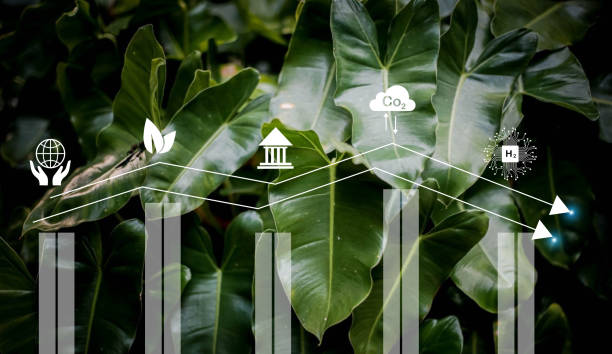
Practical Examples of Regenerative Agriculture Practices
Regenerative agriculture encompasses a wide range of practices that work together to restore and improve the health of the land and ecosystems. In this section, we will explore some practical examples of regenerative agriculture practices that farmers can implement to create a more sustainable and resilient farming system.
One of the fundamental practices in regenerative agriculture is cover cropping. This involves planting a variety of cover crops, such as legumes, grasses, or brassicas, during periods when the main cash crop is not growing. Cover crops help protect the soil from erosion, improve soil structure, and add organic matter when they are terminated and incorporated back into the soil.
Crop rotation is another key practice in regenerative agriculture. By alternating the types of crops grown in a particular field from season to season, farmers can break pest and disease cycles, improve soil health, and reduce the need for synthetic inputs. This practice also promotes biodiversity by creating different habitats for a variety of beneficial organisms.
Conservation tillage is another technique commonly used in regenerative agriculture. Unlike conventional tillage, which involves extensively disturbing the soil, conservation tillage aims to minimize soil disturbance as much as possible. This helps preserve soil structure, reduce erosion, and enhance the overall health of the soil ecosystem.
Another practical example of regenerative agriculture is the integration of livestock into the farming system. Rotational grazing, for instance, involves moving livestock from one area of the pasture to another on a regular basis. This mimics the natural movement of herbivores and helps improve soil fertility and nutrient cycling. Additionally, livestock provide natural fertilizer through their manure, which enriches the soil with essential nutrients.
Agroforestry is also gaining traction in the realm of regenerative agriculture. This practice involves incorporating trees into agricultural landscapes, either through alley cropping, where rows of trees are planted alongside crops, or through silvopasture, which combines trees with grazing animals. Agroforestry enhances biodiversity, reduces soil erosion, and provides additional income streams for farmers through timber or non-timber forest products.
These are just a few examples of the practical regenerative agriculture practices that farmers can adopt. By implementing these techniques and others like them, farmers can promote soil health, enhance biodiversity, and contribute to climate change mitigation. Ultimately, regenerative agriculture offers a pathway towards a more sustainable and resilient future for farming.
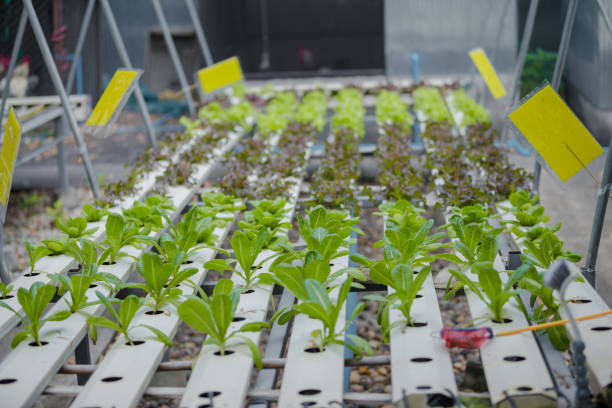
Challenges and Opportunities in Adopting Regenerative Agriculture
Adopting regenerative agriculture practices comes with both challenges and opportunities. While regenerative agriculture offers numerous benefits, transitioning from conventional farming methods to this holistic approach requires a shift in mindset and a willingness to embrace change.
One of the main challenges in adopting regenerative agriculture is the initial investment of time, effort, and resources. Implementing practices like cover cropping, crop rotation, and conservation tillage may require upfront costs and additional labor. Farmers may need to acquire new equipment or adjust their existing machinery to accommodate regenerative practices. Additionally, the transition period from conventional to regenerative agriculture can be a learning curve, as farmers adapt to new techniques and management strategies.
Another challenge lies in the lack of knowledge and awareness surrounding regenerative agriculture. Many farmers may be unfamiliar with the principles and benefits of this approach, making it difficult for them to make informed decisions about transitioning. Education and outreach programs are essential to spread awareness and provide support for farmers interested in adopting regenerative practices.
Furthermore, regenerative agriculture requires a shift in mindset away from the “one-size-fits-all” approach of conventional farming. It emphasizes the importance of understanding the unique characteristics of each farm and implementing practices that are tailored to its specific needs. This level of individualized management requires a deep understanding of the farm ecosystem and a willingness to experiment and adapt.
However, despite these challenges, there are significant opportunities in adopting regenerative agriculture. One such opportunity is the potential for increased profitability. While the initial investment may be higher, regenerative practices can lead to reduced input costs, improved soil fertility, and higher crop yields in the long run. By building healthier soils, farmers can achieve more resilient and sustainable farming systems.
Regenerative agriculture also offers opportunities for environmental stewardship. By enhancing soil health and promoting biodiversity, farmers can play a crucial role in conserving and protecting natural resources. Regenerative practices help to reduce the use of synthetic fertilizers and pesticides, contributing to cleaner air and water. Additionally, by sequestering carbon dioxide from the atmosphere, regenerative agriculture actively addresses climate change and helps to create a more sustainable future.

Looking to the Future: Regenerative Agriculture as a Sustainable Solution
As we look ahead to the future, it becomes increasingly clear that regenerative agriculture is not just a passing trend, but a sustainable solution for the challenges our planet faces. The benefits of regenerative agriculture go beyond the immediate benefits for farmers and their communities; they extend to the environment as a whole, making it a powerful tool in creating a more sustainable and resilient agricultural system.
One of the key reasons regenerative agriculture holds so much promise for the future is its ability to improve soil health. By prioritizing practices that build organic matter, enhance soil structure, and promote beneficial microorganisms, regenerative farmers are able to create healthier soils that can withstand the impacts of climate change, resist erosion, and support higher crop yields. This is particularly important as we face increasing pressures on our agricultural systems and the need to feed a growing global population.
Regenerative agriculture also offers a pathway towards mitigating climate change. Through practices such as carbon sequestration and reduced reliance on synthetic inputs, regenerative farmers can significantly reduce greenhouse gas emissions. By locking carbon dioxide away in the soil and reducing the energy-intensive production and transport of synthetic inputs, regenerative agriculture actively contributes to a healthier planet and a more sustainable future.
Looking to the future, regenerative agriculture holds tremendous potential for transforming our agricultural systems into more resilient, sustainable, and environmentally-friendly ones. However, it is important to recognize that adopting regenerative practices is not without its challenges. It requires a shift in mindset, investment in time and resources, and a willingness to embrace change. Nonetheless, the opportunities that regenerative agriculture presents, such as increased profitability and environmental stewardship, make it a worthwhile endeavor.

In conclusion, regenerative agriculture is more than just a farming practice; it is a vision for the future of agriculture. By prioritizing soil health, enhancing biodiversity, and mitigating climate change, regenerative farmers are creating a more sustainable and resilient agricultural system that benefits farmers, communities, and the environment. As we move forward, let us embrace regenerative agriculture as a sustainable solution for the future of farming and work towards a healthier planet for generations to come.
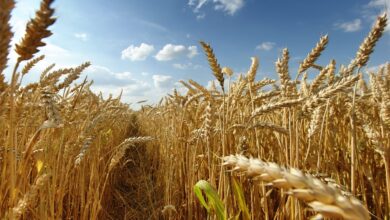
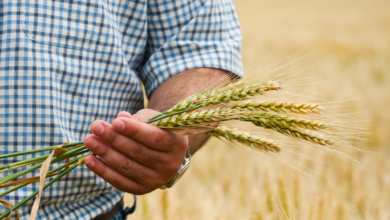


Rising business expenses are taking a toll on small business owners.
You are not alone. It’s affecting every industry.
One way to give yourself some breathing room is to obtain enough working capital to bridge you through the tough times.
Get a no obligation working capital quote in less than 2 minutes.
USA Based Businesses Only!
Send me a message at my contact info below for info
Elizabeth Miller
elizabeth.miller@helloratesfastfunding.com
https://www.helloratesfastfunding.com